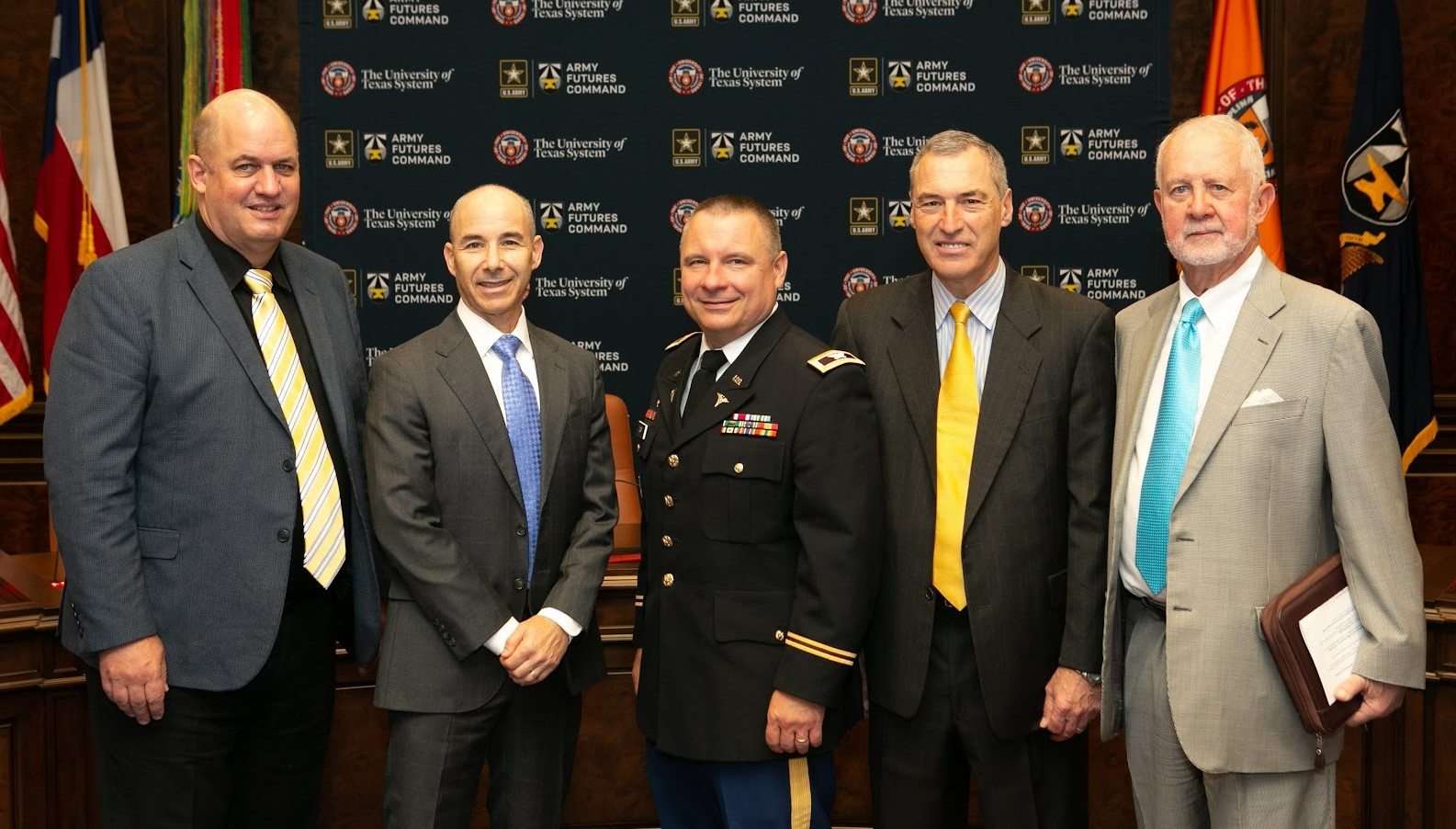UTHealth Houston Departments of Anesthesiology and Emergency Medicine Team With US Army to Improve Casualty Care

On April 19, 2022, The University of Texas System and the United States Army Futures Command (AFC) announced an official educational and cooperative research partnership to advance medical science and technology to save lives both on and off the battlefield.
For more than a year, senior leaders and technical experts among the Army Futures Command (AFC), U.S. Army Medical Research and Development Command (MRDC), and The University of Texas (UT System) have been exploring avenues to improve casualty care in the United States.
At this Memorandum of Understanding signing, the UTHealth Houston Departments of Emergency Medicine and Anesthesiology were selected to present their joint “bench to bedside” research centered around improving soldier battlefield resuscitation from hemorrhagic shock.
“I cannot overstate how thrilled we are to be part of this monumental collaboration,” said Holger Eltzschig, MD PhD, chair of the Department of Anesthesiology at McGovern Medical School at UTHealth Houston. “This will produce unprecedented opportunities for furthering the impact of our novel research focusing on hypoxia and inflammation and how to mitigate organ injury using the newly discovered class of therapeutics called hypoxia-inducible factor prolyl hydroxylase inhibitors (HIF-PHIs).”
“Our unique translational research collaboration with Dr. Eltzschig’s world-class basic science lab presents a unique opportunity to drive discovery in resuscitation like never before,” said Bentley J. Bobrow, MD chair of the Department of Emergency Medicine at McGovern Medical School. “Our departments working together have proven with our Department of Defense-funded COVID-19 ARDS trial that we can move rapidly from concept to implementation of complex clinical trials and now have a chance to dramatically improve the outcomes of our soldiers wounded on the battlefield. This research with the US Army would translate into saving more civilian lives from trauma which is a major public health problem and the number one killer of people under 44 years of age.”
The Departments of Anesthesiology and Emergency Medicine are working closely with scientists at the U.S. Army Institute for Surgical Research (USAISR) to accomplish these goals.
A YouTube Link can be found here.